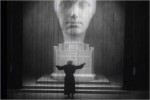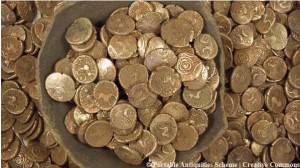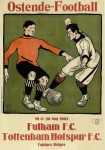Lorenzo de’ Medici, de facto ruler of Florence from 1469 until his death in 1492, was known as “The Magnificent” during his lifetime and was a renown patron of the arts. Macchiavelli called him the greatest patron of art and literature that any prince has ever been. Michelangelo, Leonardo, Botticelli and pretty much every other luminary of the Florentine Renaissance you can think of lived and worked in his court.
Yet, he didn’t commission as many pieces as you’d think, and until very recently, no items known to have been in his personal art collection were extant. Medici collections after Lorenzo form the core of the most famous Florentine museums today like the Uffizi Gallery, but Lorenzo himself was a bit of black hole, magnificence notwithstanding.
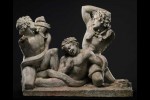 Then an Austrian family decided to sell some of the clutter in their manor home and pointed a Sotheby’s expert to a sculpture of three satyrs fighting a serpent they’d stashed behind an armoire. It was dusty, dirty and covered in dead spiders, but Florent Heintz, head of Sotheby’s antiquities department in New York, could tell even from the blurry picture that there was something special under all those arachnids.
Then an Austrian family decided to sell some of the clutter in their manor home and pointed a Sotheby’s expert to a sculpture of three satyrs fighting a serpent they’d stashed behind an armoire. It was dusty, dirty and covered in dead spiders, but Florent Heintz, head of Sotheby’s antiquities department in New York, could tell even from the blurry picture that there was something special under all those arachnids.
After a great deal of research, Sotheby’s experts found that the satyrs are a 1st century A.D. Roman sculpture after a Hellenistic original now lost.
A stash of letters, found by two scholars and published in 2006, chronicles its history. The missives show that in 1489 a Roman antiquities dealer, Giovanni Ciampolini, excavated the sculpture in the gardens of the convent of San Lorenzo in Rome, where several other famous ancient sculptures were unearthed, including the Apollo Belvedere, later installed in the Vatican. Shortly after it was found, the sculpture of the satyrs was sold to two of Lorenzo de’ Medici’s agents in Rome.
A letter to Lorenzo describes the figures as “three beautiful fauns on a small marble base, all three bound together by a great snake [… and even if one cannot hear their voices they seem to breathe, cry out and defend themselves with wonderful gestures; that one in the middle you see almost falling down and expiring].” The sculpture was packed in a crate and strapped to a mule for the journey to Florence from Rome, according to the letters.
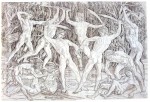 The sculpture may have inspired some of the figures in Michelangelo’s Battle of the Centaurs relief, carved in 1492, and possibly one of the fallen figures in Pollaiuolo’s Battle of the Nudes engraving (the guy on the bottom right looks a lot like the middle satyr), although that’s controversial because the date of the engraving is generally thought to be considerably before 1489.
The sculpture may have inspired some of the figures in Michelangelo’s Battle of the Centaurs relief, carved in 1492, and possibly one of the fallen figures in Pollaiuolo’s Battle of the Nudes engraving (the guy on the bottom right looks a lot like the middle satyr), although that’s controversial because the date of the engraving is generally thought to be considerably before 1489.
After Lorenzo died, the sculpture disappears from the record for 350 years, until it turned up again in a private collection on the Dalmation coast in 1857. That’s when the ancestor of the Austrian family who consigned it to Sotheby’s purchased it. The satyrs were actually published in 1930 and a plaster cast — now in the University Museum in Graz — was made, but the statue dropped out of public view again until it was found behind that armoire.
It’s going up for auction on June 11th in New York City. Sotheby’s expects the piece to sell for between $300,000 and $500,000. I suspect that’s conservative.
